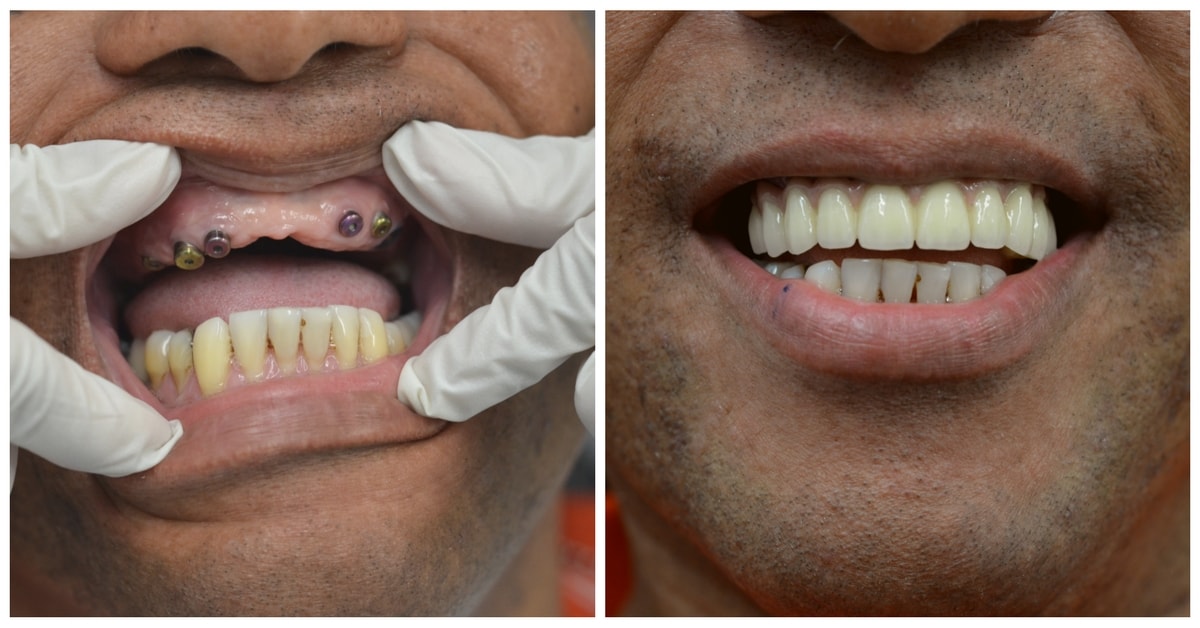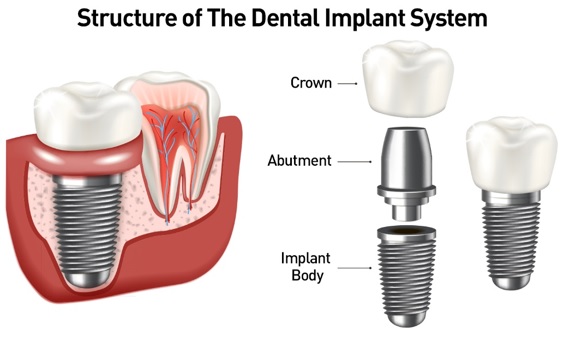A Biased View of Dental Implants
Some Ideas on Dental Implants You Should Know
Table of ContentsThe Best Strategy To Use For Dental ImplantsSome Known Factual Statements About Dental Implants The Of Dental ImplantsGetting The Dental Implants To Work
are medical tools operatively implanted into the jaw to recover an individual's capability to eat or their appearance. They offer support for synthetic (phony) teeth, such as crowns, bridges, or dentures. When a tooth is lost because of injury or condition, an individual can experience complications such as rapid bone loss, faulty speech, or adjustments to eating patterns that result in discomfort.
Framework of The Dental Implant System choosing dental implants, talk to your dental supplier concerning the potential advantages and risks, and whether you are a prospect for the procedure. Points to consider: Your overall health and wellness is a vital consider establishing whether you are a good candidate for oral implants, for how long it will certainly take to heal, and the length of time the dental implant may remain in area.
Smoking cigarettes may impact the recovery process and reduce the long-term success of the implant. The healing procedure for the dental implant body might take a number of months or longer, during which time you typically have a momentary abutment in place of the tooth. the oral implant treatment: Carefully adhere to the oral hygiene instructions provided to you by your oral provider.
The 45-Second Trick For Dental Implants
Implant failure can result in the demand for one more surgical treatment to take care of or replace the implant system. Brings back the ability to chew Brings back aesthetic appearance Aids maintain the jawbone from diminishing as a result of bone loss Protects the health and wellness of the surrounding bone and periodontals Helps maintain adjacent (neighboring) teeth steady Improves lifestyle Damage to bordering all-natural teeth throughout dental implant positioning Injury to the surrounding tissues throughout surgical procedure, such as sinus opening Injury during surgical treatment (for example, crack of bordering jawbone) Poor function, such as really feeling like the teeth do not bite together usually A sensation that the tooth hangs or turning in location arising from an abutment screw loosening Implant body failure (looseness of the dental implant body) due to systemic infection, which might be most likely in people with unrestrained diabetics issues as a result of regional infection in bone and periodontals supporting the dental implant body due to postponed healing, which might be more probable in people who smoke Difficulty cleansing the gum tissues around the implant, resulting in bad oral hygiene Untreated gum disease Post-surgical pins and needles as a result of nerve impingement or damages Always notify health care carriers and imaging specialists that you have dental implants before any magnetic resonance imaging (MRI) or x-ray procedures.
FDA is not familiar with any type of negative occasions reported for MRI or x-ray treatments with dental implants. Dental implants systems are typically constructed from products that comply with international consensus standards of the International Company for Standardization (ISO) or ASTM International. These requirements have information of what makes a risk-free product.
Various other products such as gold alloys, cobalt-based alloys, titanium alloys, or ceramic products are sometimes utilized. The safety accounts of these products are popular. Oral dental implant systems are reviewed according to international agreement criteria. Biocompatibility testing, to show that bodily call with the gadget sites does not create difficulties like irritability or allergy, becomes part of the analysis that aids make certain the products in the dental implant system are safe and do not cause adverse impacts when implanted in individuals.

8 Simple Techniques For Dental Implants
Some people are not eligible for dental implant surgical procedure. It is for dental cosmetic surgeons to run on individuals with: acute illnessuncontrollable Learn More metabolic diseasebone or soft cells condition or infectionIf these issues are dealt with, an individual can have the surgical treatment. Dental Implants. In, oral cosmetic surgeons abstain from operating people with: If people with any one of the above undertake dental implant surgery, there is a higher risk of the dental implant stopping working
Some people have a jawbone problem that avoids enough bone for a dental implant from establishing. In such situations, a cosmetic surgeon may require to execute a ridge alteration. This includes raising the periodontal to expose the location of flawed bone. The specialist will then use a bone or bone replacement to fix and accumulate the location.
Oral dental implant surgical treatment is a customized procedure. Give you time to recover. Affix the article and final crown, bridge or denture.
Next off, your doctor will thoroughly put the dental implant into your jaw. Your cosmetic surgeon will certainly reposition your periodontals and shut the incision with stitches (Dental Implants). If your implant is near the front of your mouth, your dentist will make a momentary tooth for you to put on until you heal. This way, you will not have a void in your smile while you recover.
A Biased View of Dental Implants
Your provider can tell you what to anticipate in your scenario. Throughout the healing phase, your jawbone should fuse to the oral implant. This procedure, called Get More Information osseointegration, is essential for security and long-lasting success. This process can take anywhere from three to nine months. Sometimes, it might take longer.
Once your dental implant heals, your dentist can affix the joint (little connector blog post) and your final repair (crown, bridge or denture). This usually takes concerning one hour to complete and may call for a second small surgical treatment. You shouldn't really feel any type of pain throughout your dental implant treatment since your service provider will certainly utilize medication to numb your gum tissues.